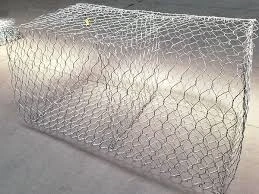-
 Phone:
Phone: -
 Email:
Email:

Exploring the Uses and Benefits of Loop Tie Wire in Various Applications
Understanding Loop Tie Wire A Versatile Tool for Various Applications
Loop tie wire, often overlooked, is an essential component in many industries and applications. It is a type of wire that features loops at each end, designed primarily for tying, securing, and holding various materials together. Its simplicity in design belies its numerous uses and the convenience it provides for both professionals and DIY enthusiasts.
One of the most common applications of loop tie wire is in construction. In the building industry, it is used extensively to secure rebar and other reinforcement materials in position before concrete is poured. This is crucial for ensuring that the resultant structure possesses the desired strength and stability. Loop tie wire offers a reliable and efficient means of securing these materials, allowing workers to focus on other aspects of the construction process without worrying about potential structural issues during the curing phase of concrete.
In gardening and horticulture, loop tie wire serves as a valuable tool for plant support. Gardeners often use it to tie plants to stakes, arches, or trellises, ensuring that they grow upright and receive adequate sunlight and nutrients. It is particularly useful for climbing plants that require extra support to thrive. The wire's flexible nature allows for adjustments as plants grow, making it an ideal solution for nurturing a garden.
Moreover, loop tie wire finds applications in the manufacturing sector, especially in packaging and fastening processes. It is frequently employed to bundle materials, ensuring that supplies remain organized during transportation or storage. In factories, assembly lines utilize loop tie wire to secure components before they undergo further processing or packaging. The quick and easy application process makes it a favorite among workers trying to maximize efficiency in a fast-paced environment.
loop tie wire

Another commendable advantage of loop tie wire is its accessibility. It comes in various materials, including galvanized steel, stainless steel, and plastic-coated options, making it suitable for different conditions and environments. Galvanized steel offers corrosion resistance, making it ideal for outdoor use where exposure to the elements is a concern. Meanwhile, plastic-coated wire provides an additional layer of protection and a more aesthetically pleasing finish, which is often preferred for visible applications.
The ease of use is another factor that sets loop tie wire apart from other fastening methods. It can be cut to the desired length, twisted, and shaped as needed without requiring specialized tools. This user-friendly aspect empowers individuals to tackle various projects with confidence, from home improvements to more complex industrial undertakings.
However, while loop tie wire is highly useful, it must be employed correctly to avoid potential hazards. Over-tightening the wire can damage materials or result in breakage under stress. Additionally, it’s important to choose the right gauge and material for specific tasks, ensuring that the wire can withstand the intended load and any environmental factors it may encounter.
In summary, loop tie wire is a remarkably flexible and practical tool that plays a vital role across multiple sectors. From construction to gardening and manufacturing, its applications are diverse and invaluable. As people continue to explore innovative ways to use loop tie wire, its popularity and importance are likely to grow, solidifying its status as an indispensable item in toolboxes everywhere. Whether you're a professional or a hobbyist, having loop tie wire on hand can make all the difference in the success and efficiency of your projects.
-
Wire Mesh for Every Need: A Practical SolutionNewsJul.25,2025
-
Steel Fences: Durable, Secure, and Stylish OptionsNewsJul.25,2025
-
Roll Top Fencing: A Smart Solution for Safety and SecurityNewsJul.25,2025
-
Cattle Farm Fencing Solutions for Maximum SecurityNewsJul.25,2025
-
Affordable Iron Binding Wire SolutionsNewsJul.25,2025
-
Affordable Galvanized Wire SolutionsNewsJul.25,2025
-
Wire Hanger Recycling IdeasNewsJul.25,2025








